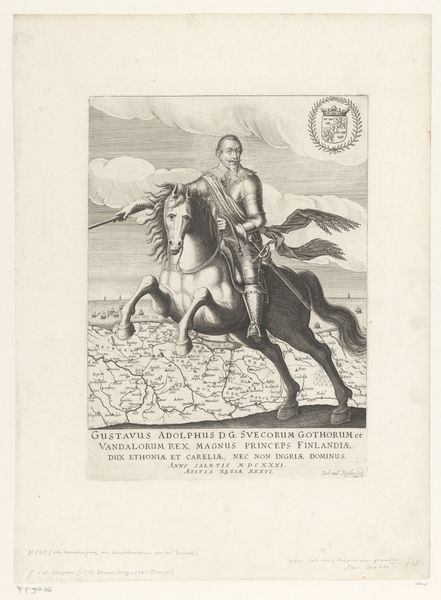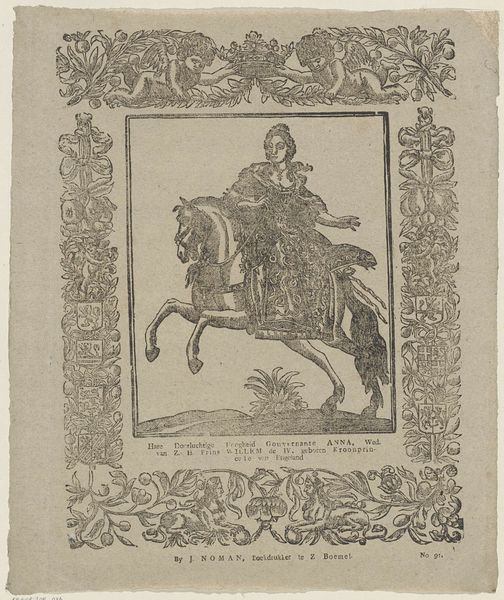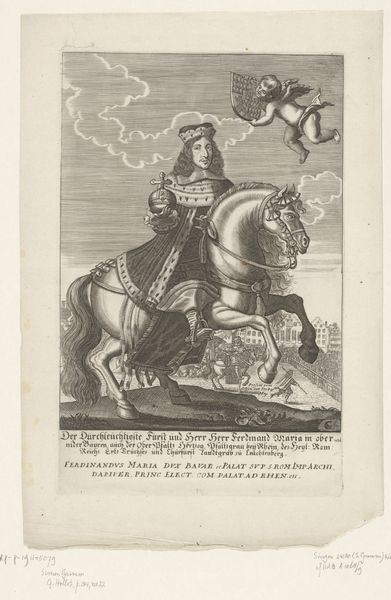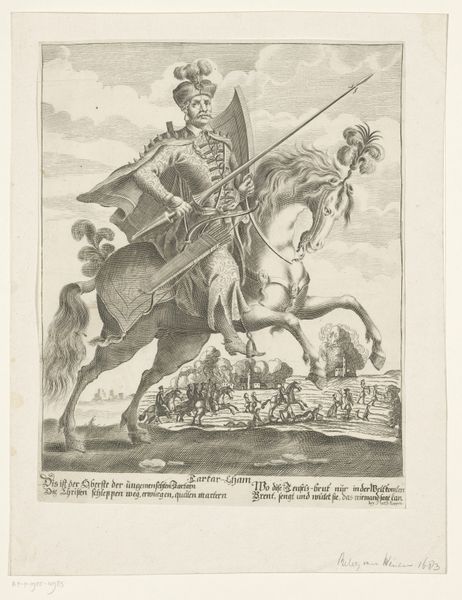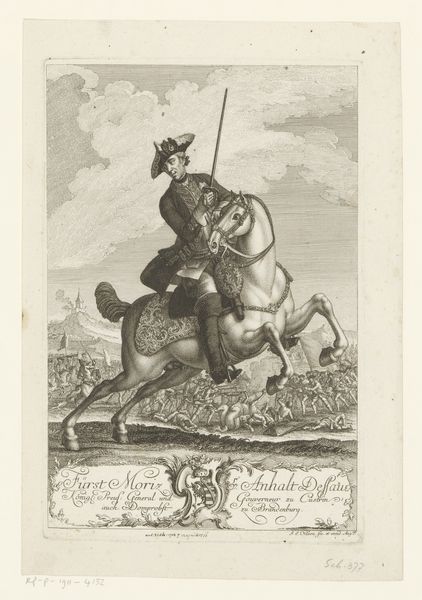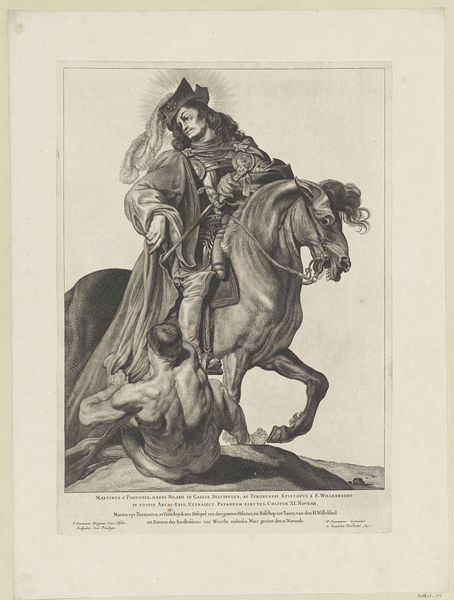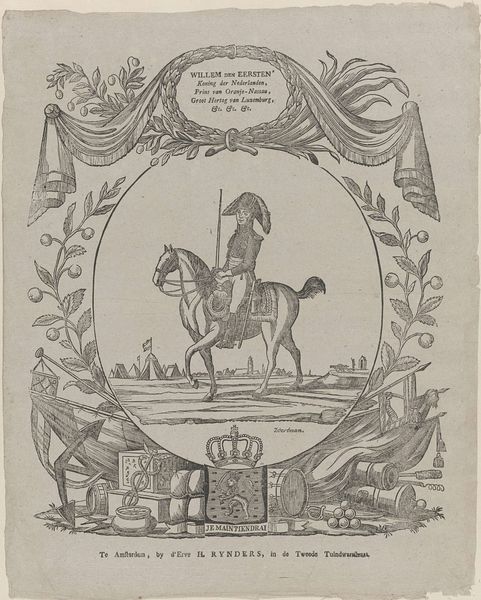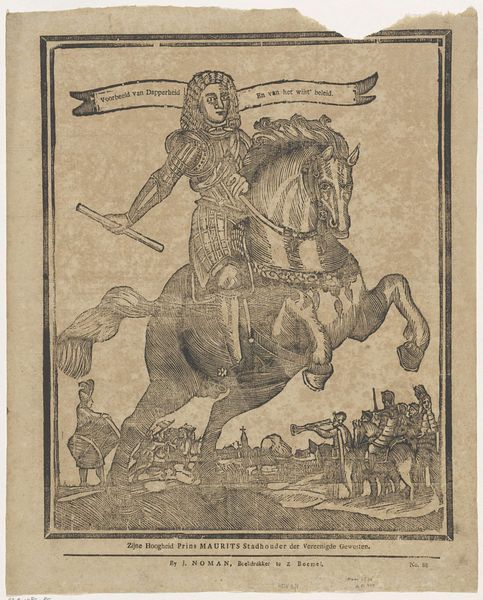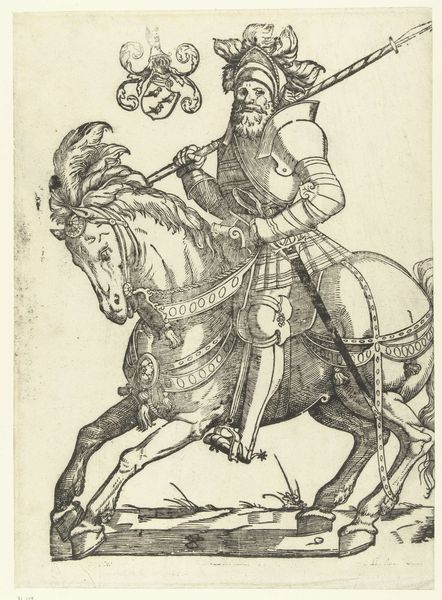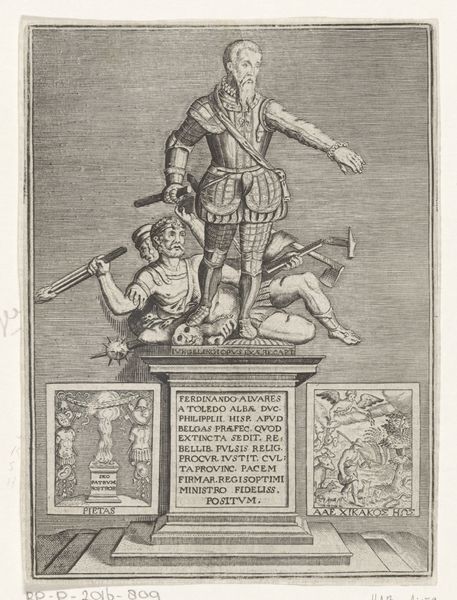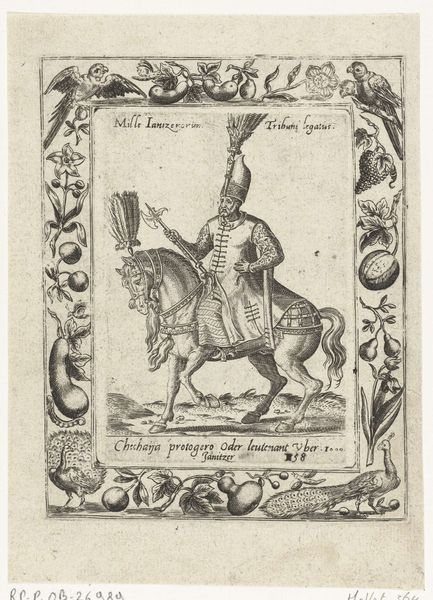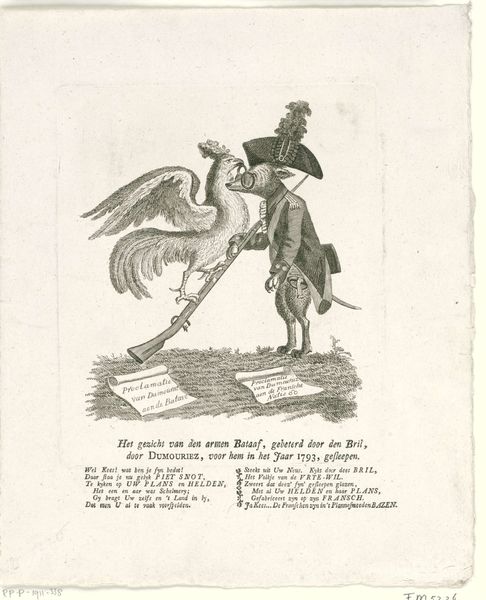
print, engraving
#
portrait
# print
#
11_renaissance
#
history-painting
#
engraving
#
erotic-art
Dimensions: height 173 mm, width 112 mm
Copyright: Rijks Museum: Open Domain
Curator: Look at this stately figure! This is a print titled "Portrait of Wilhelm von Verdugo on Horseback," made sometime between 1593 and 1625. The artist is Eberhard Kieser. Editor: My first impression is one of absolute power. The rider seems almost too imposing for the delicate, linear rendering of the engraving. It's interesting how the detail emphasizes strength, even aggressiveness, within such a contained format. Curator: The image encapsulates so much of the complex power dynamics of the Renaissance. Verdugo, positioned heroically on horseback, embodies military prowess. Note how the smaller scene in the background emphasizes a military battle. Editor: And the horse itself is practically a lexicon of symbolism! Raised hooves signify dominance, and the elaborate harness and saddle suggest wealth and authority. The overall message seems clear: Verdugo is meant to be viewed as a glorious leader, sanctioned, almost ordained. Even the circular emblems at the top reinforces his status. Curator: Indeed. Understanding this portrait requires us to consider the intersection of power, portraiture, and propaganda. Kieser likely created this print as a way to bolster Verdugo's image, presenting him as an invincible force amid political volatility. His stance is not an accidental rendering; he appears secure in his authority. Editor: Yes, it seems Verdugo, with the baton in his left hand and the laurel wreath on his right, presents an extremely controlled figure, as a commander or a Roman emperor. It's also quite intriguing that, despite its classical nods, this rendering feels distinctly northern European, with its somewhat harsher lines and less idealized forms. Curator: That distinction is important. We should think about the artist and audience too. What statements were Kieser and Verdugo trying to make to those within and outside the immediate circles of power at the time? These images weren’t just seen; they operated as critical tools for consolidating authority. Editor: Considering the potent iconography and meticulously crafted composition, it offers much more than just a visual record of a man on a horse. Curator: It makes us reconsider history and how images can reconstruct identities for political gain. Editor: Definitely, it prompts us to examine what happens when you translate the very symbols of authority into an artistic expression of power.
Comments
No comments
Be the first to comment and join the conversation on the ultimate creative platform.
